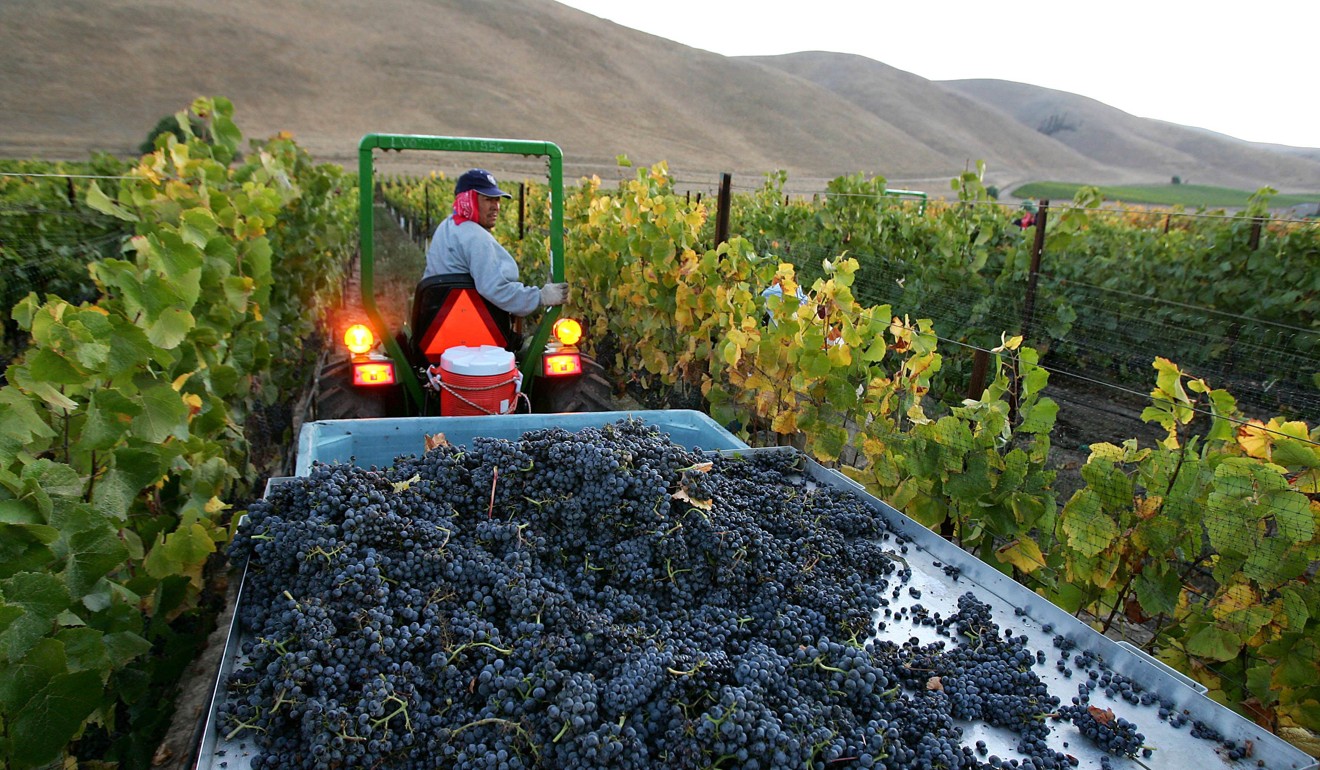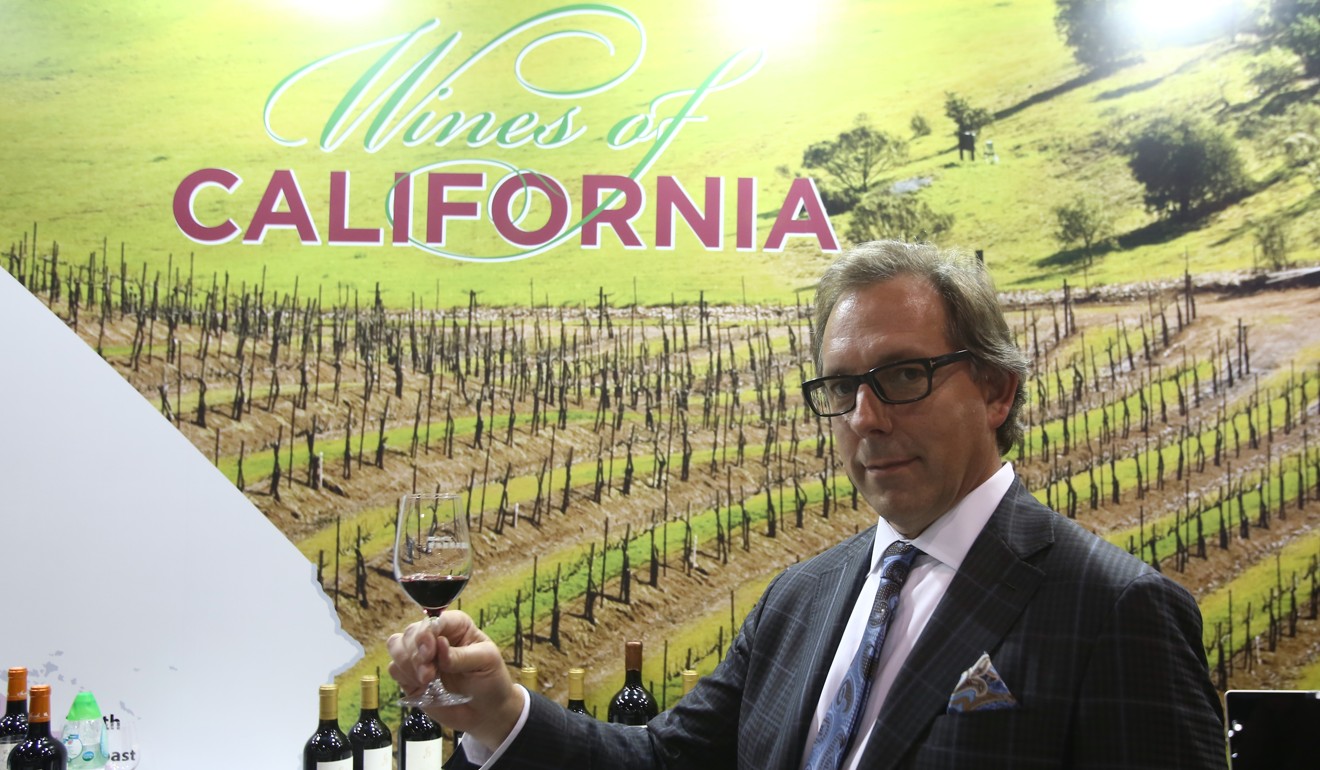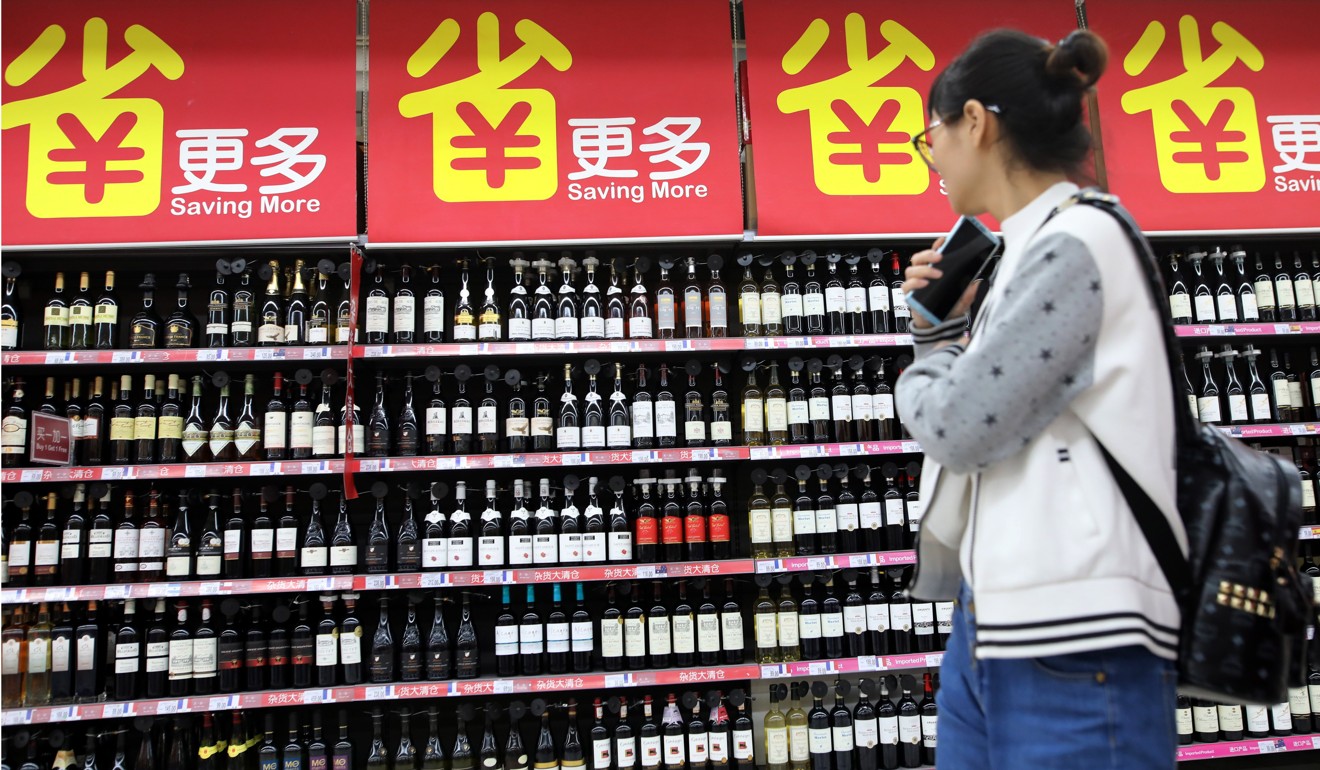
Trade war tariffs sour Chinese appetite for US wines at Hong Kong industry fair
- Tit-for-tat duties are pricing US wines out of the reach of Chinese consumers
- Chinese importers are switching to wines from Europe, South America and Australia to fill the gap
American wine traders and Chinese importers have little to cheer in Hong Kong at one of the world’s largest industry shows as the China-US trade war sour consumers’ appetites.
Some mainland buyers who are regulars at the four-day International Wine and Spirits Fair, balked at the tit-for-tat tariffs, of 25 per cent, which Beijing imposed on American goods, including wine, as of September.
American wine exporters, mainly those from California, were hit not only by the tariffs but the lingering weaknesses in yuan against the US dollar.

Jeffrey Williamson, director of the government-backed California State Trade Expansion Program, said on Thursday that US wine exports to China were expected to drop 10 per cent next year if the trade war endures.
“Forward looking is a bit murky,” he said in an interview. “It is really a tough market … but it is too big to ignore.”
China bets its vast supply chain can muscle through Trump’s trade war
He did not think the outcome of the midterm elections on Tuesday would sway US President Donald Trump’s hardline policy on China.
“There is no pressure at all for President Trump to do anything different to China with the midterm election outcome as Democrats took over the House of Representatives,” he said. “Those bigger factors are how Trump and his party maintain their position of power and how [Chinese] President Xi [Jinping] maintains his power, and having a good economy will help these things.”

Blasting China for dragging its feet on opening up more for foreign investors, Trump has launched a series of punitive tariffs on over a total of US$250 billion worth of Chinese goods since March. China has hit back with reciprocal tariffs on American imports. For example, Beijing imposed an extra 15 per cent tariff on American wine in September, which took the total to 25 per cent.
According to the Wine Institute, an advocacy group based in San Francisco, 90 per cent of US wine exports were from California. Exports to Hong Kong jumped 15 per cent to US$119 million last year, which accounted for about 8 per cent of the total of US$1.5 billion. Exports to China rose 6 per cent to US$77 million.

Dwight Bonewell, director and winemaker of Grand Napa Vineyards in California’s Napa Valley, said some of his clients in China have stopped sourcing American wine until the tariffs are lifted.
The vineyard, which has been selling red and white wine in China for the past decade, was offering existing stock in its warehouses in Guangzhou and Shanghai, he said.
“This inventory will be depleted by the Lunar New Year,” he said. “One saving grace is the US market is very strong now.”
The American farmers caught in the US-China trade war crossfire
A bottle of Grand Napa Vineyards’ red or white wine, which costs between US$50 (345 yuan or HK$389) and US$150, is subject to a total levy of 80 per cent including tariffs, a value-added tax and an excise tax. To add salt to the wound, yuan has depreciated about 8.8 per cent against the US dollar since March.

There is no way we can pass the tariffs to shoppers
A Guangzhou-based wine wholesaler who called himself Dennis, and who is a customer of Grand Napa Vineyards, said he stopped sourcing American wine after the tariffs took effect in September.
“There is no way we can pass the tariffs to shoppers,” he said, adding that he switched to selling Italian and French wine.
Xu Zhiqiang, a co-owner of wine importer Shaoguan Lian Yang Trading Co., said American wine was too expensive to source now and he instead switched to Australian and Chilean imports.
“China’s economy has slowed down a lot and the government’s anticorruption campaign had an impact as well; the number of wine hampers we sold during the last Mid-Autumn Festival dropped 50 per cent,” he said.
He added that Australian wine carries a tax of about 38 per cent and Chilean wine about 32 per cent, which makes them comparatively more receptive to the mass market.
Still, there is a newcomer who wants to break into the mainland market despite the trade war. Grant Yeargain, director of sales and guest experiences of Hong Kong-owned Hestan Vineyards in California, said it wanted to test the waters of the China market. But he conceded that it is not “an ideal time.”

